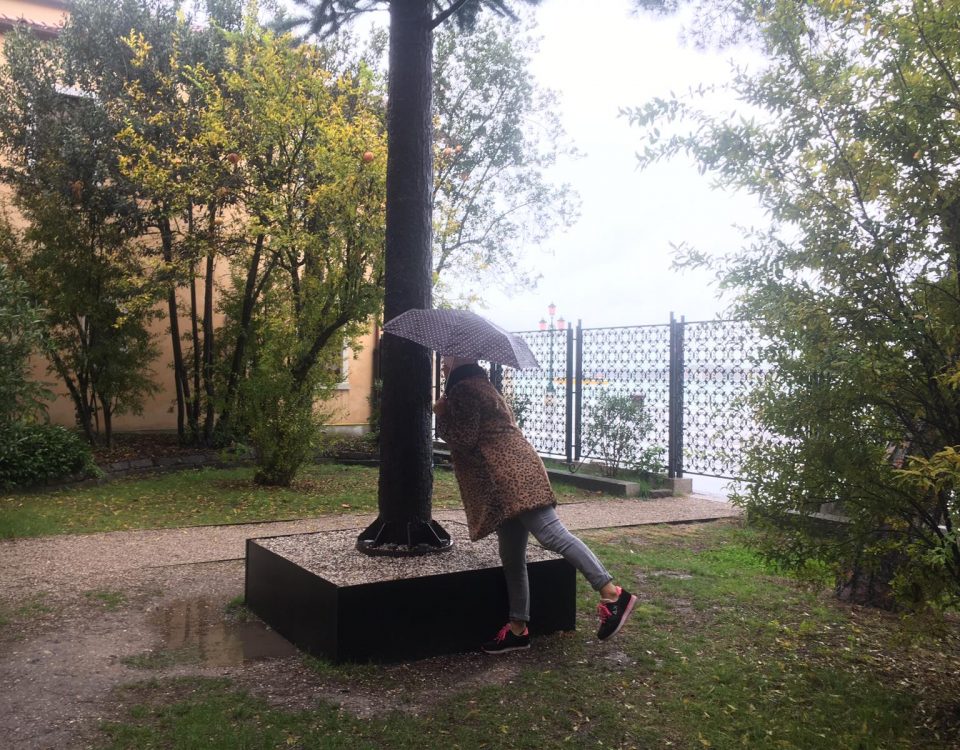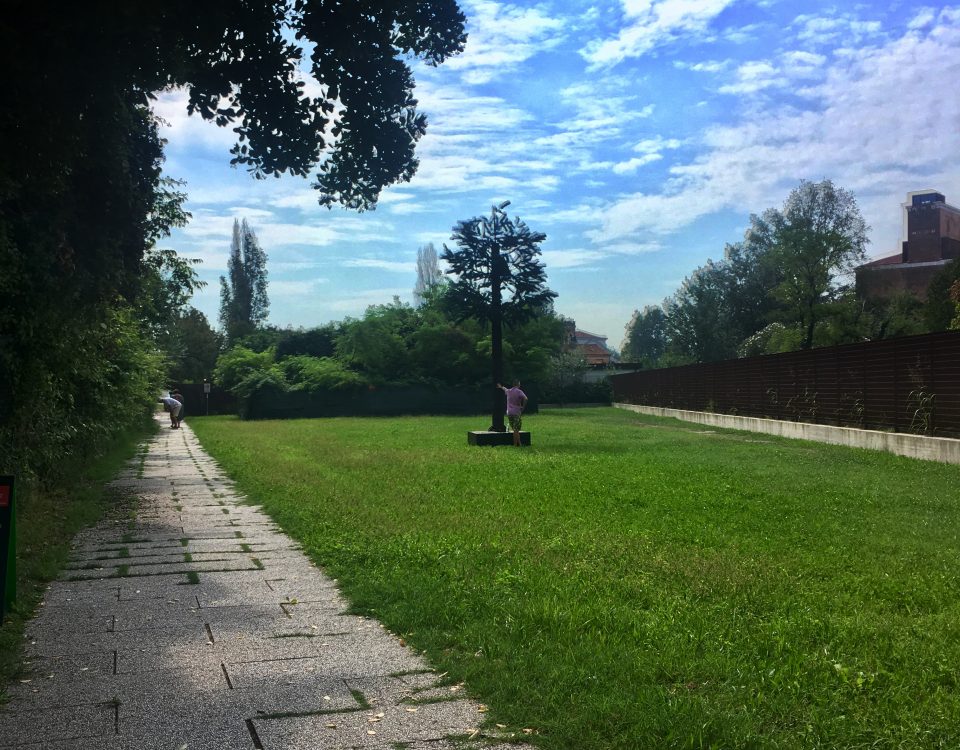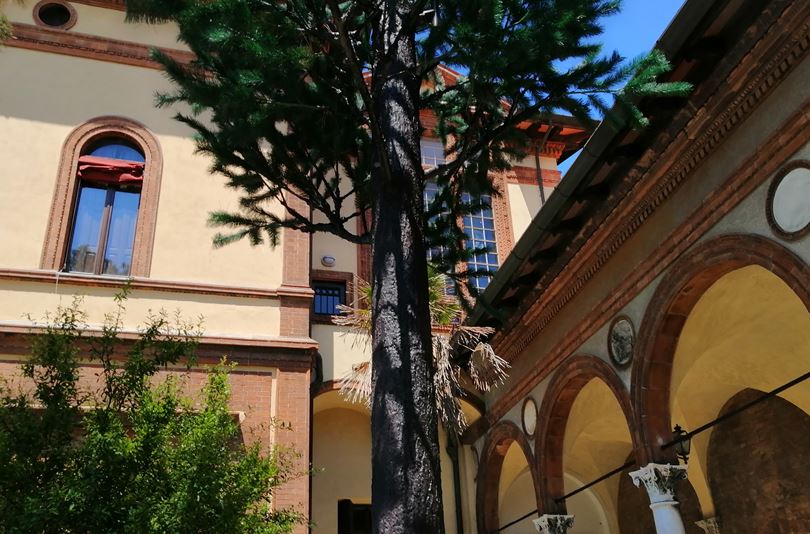
Call for proposals: NZ at Venice 2019
July 4, 2017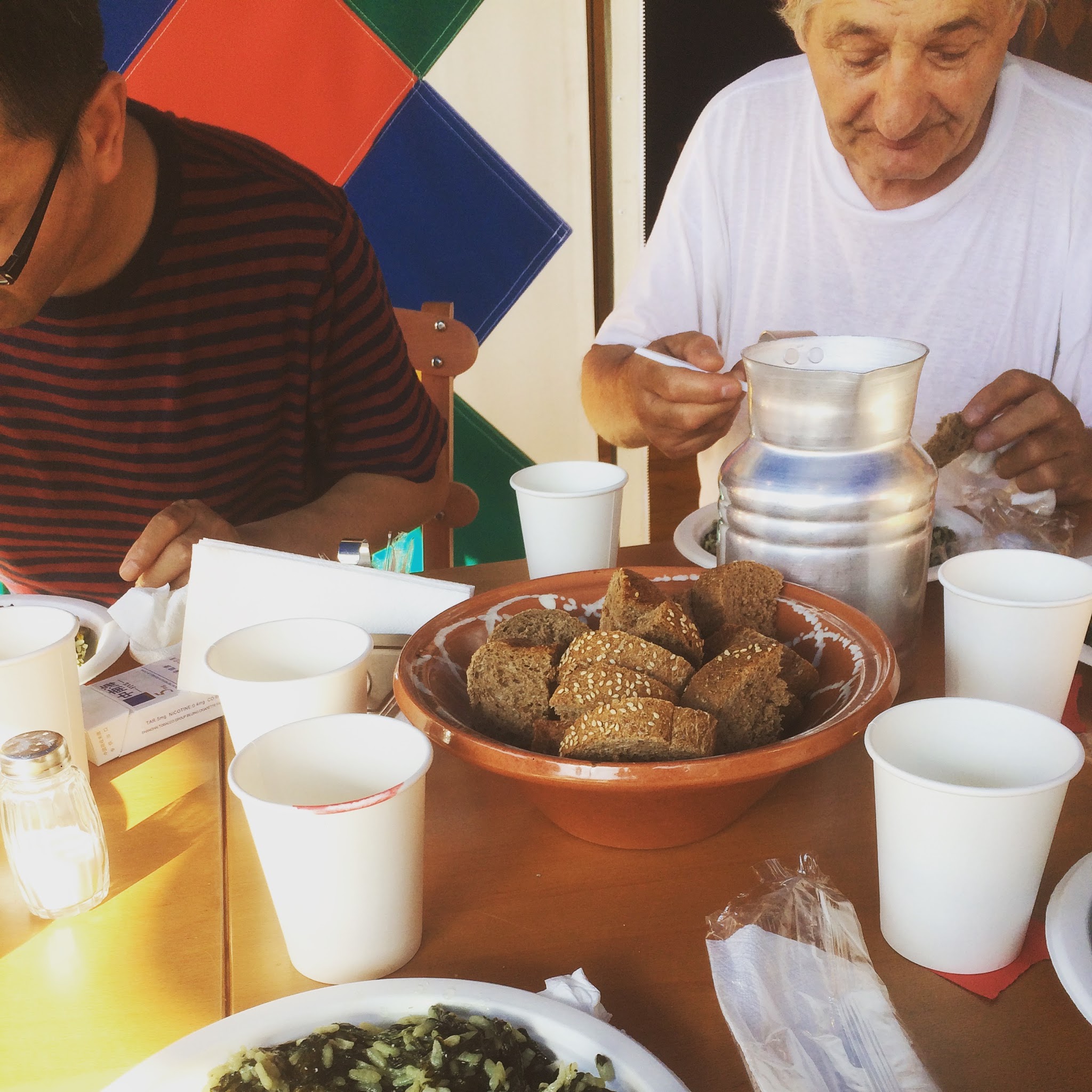
Documenta 14 to Biennale Arte 2017
August 12, 2017Because we are from the future…
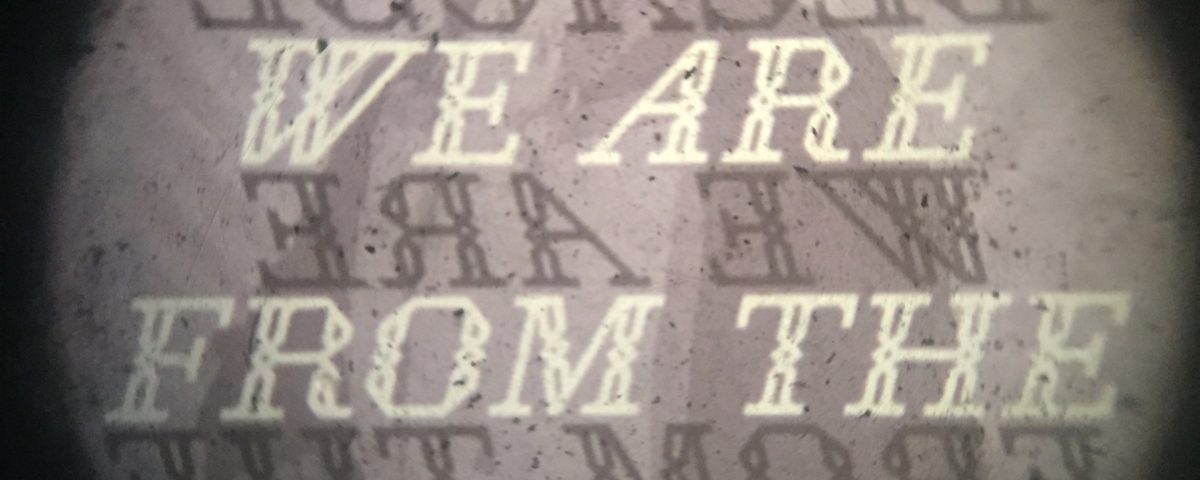
Lisa Reihana: Emissaries, Perspectival Tube III 2017. Photo by Jaenine Parkinson
Jaenine Parkinson is our second Exhibition Attendant for Lisa Reihana: Emissaries. Our attendants each spend approximately six weeks in Venice between May and November 2017. Jaenine blogs (below) about her experience of Biennale Arte 2017.
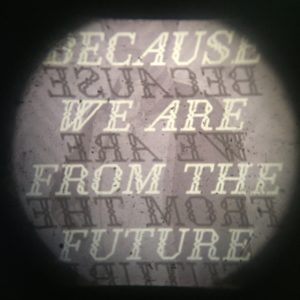
Lisa Reihana: Emissaries, Perspectival Tube III 2017. Photo by Jaenine Parkinson
“Oh, so it’s just another one of those post-colonial artworks, is it?” This is a comment I’ve heard a few times while sitting behind the front desk at the New Zealand pavilion at the Biennale Arte 2017 over the past few weeks. The other notable comment is “we are so proud” delivered in a kiwi accent with a big smile after a resounding “kia ora!”
(It’s a really nice desk by the way, probably the best at the Biennale, the other attendants are jealous. Everyone keeps taking photos of it because it does a really good job as a sign as well as offering a place to perch. It’s rather awkward though when someone points their camera at the desk when I’m sitting right behind it. Do I smile? Are they cropping me in or out of the frame? It’s hard to know. I smile anyway.)
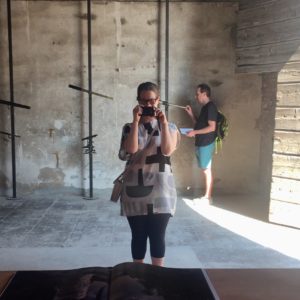
View from behind the attendant desk, New Zealand Pavilion, Tese del ‘Isolotto. Photo by Jaenine Parkinson.
My response to the above question? I think this artwork does much more than simply re-appropriate a colonial product. I think the interesting thing is that it takes us back in time to imagine moments of first contact. Both Europeans and people of the Pacific are within the frame. It shows us the seeds of power and exchange, of confusion and understanding, of curiosity and violence, ritual, sex, discovery, humour, invention and tradition that came to shape the Pacific as we know it today. Like a tardis it takes us back to a point in time from where it would be possible to create an alternative history. The potency in that is, if we can imagine an alternative history from this starting point, we can imagine an alternative future.
In Wellington right now, where I have just come from, there is an exhibition at the City Gallery that looks at the painter Colin McCahon’s engagement with Māori subjects and themes. Familiar post-colonial questions of cultural appropriation and appropriateness, raise their head. But, like Reihana’s work, they offer the opportunity for a thought experiment: if we had a chance at a do-over, if we could go back and reset, what would we do differently? How would we build these crucial relationships? Then, as Sir Tipene O’Regan asks “What was there in that old heritage that could fire a transformation to a notion of the future – of a new way of being as a people? Surely these are some of the more important questions facing New Zealand and all nations with histories of power imbalances and injustices.
This question is even more important now that the ideas seeded during the 18th and 19th century have grown into the pervasive weeds of individualism, ‘free’ trade, market liberalisation and isolationalism that collectively act as neoliberal salt on our soil. I’m reminded of lyrics from the New Zealand national anthem, penned some hundred years after Cook’s arrival–“in the bonds of love we meet”–there are some other seeds worth preserving and cultivating from the past.
If you peer into one of the five antique telescopes Reihana has included in the Lisa Reihana: Emissaries exhibition you can read the message: “because we are from the future”. This is a clue to Reihana’s motivation for spending over seven years producing this work; because it is vital that we fully see and understand our past as we walk backwards into the future. History can be a laboratory for the future. In our past we can see actual consequences to decisions played out, in contrast to whatever intentions may have been. In New Zealand we have not done a very good job of teaching, learning, understanding and acknowledging our history. Reihana’s work is a challenge to fill the gaps in our knowledge to understand our place in the Pacific and our future in the world.
What strikes me when comparing Rehina’s exhibition with Simon Denny’s Secret Power project for New Zealand at the last biennale (a part of which is still on the floor of the Marco Polo airport) is that both of these works are about power and global exchange. However, both don’t take an explicit stance within their politically mired territories. Damien Hirst’s exhibition (timed to coincide with the Biennale Arte 2017, but not officially participating) on the other hand, makes a very explicit statement. He couldn’t care less about being appropriate. His twin venue exhibition of fake museum pieces makes fun of the idea that there should be any boundaries to quotation. Hirst inhabits the same terrain of cross-cultural referencing as Reihana, although as Homi Bhabha has recently noted, we should ask ourselves: “What is a facile, self-aggrandizing, narcissistic appropriation? And what is a questing and questioning translation?” Or as Nisi Shawl writes, are these the actions of an invader, tourist or guest?

